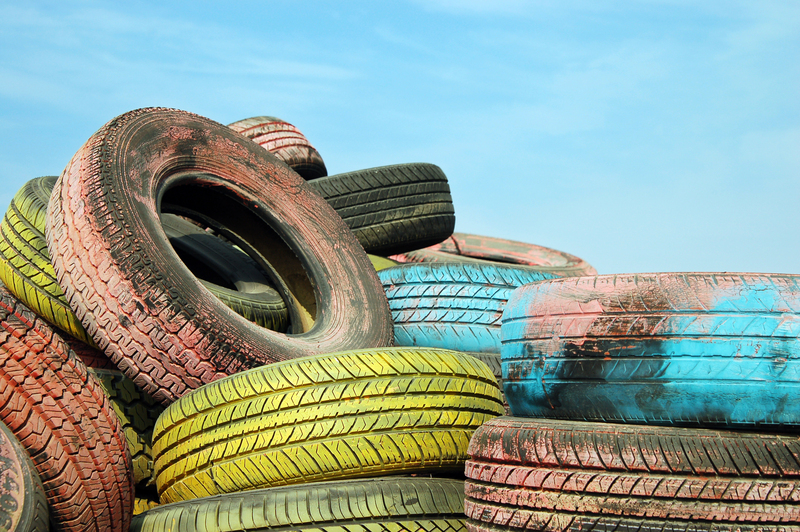Guide to Successful School Recycling Initiatives
Are you eager to make your school greener and your students more environmentally conscious? Discover actionable insights and strategic steps in our comprehensive guide to launching, growing, and sustaining successful school recycling initiatives.

Why School Recycling Initiatives Matter
Implementing school recycling programs goes beyond tossing bottles in the blue bin. It's a cornerstone of environmental stewardship, helping to reduce landfill waste, conserve natural resources, and cultivate eco-friendly habits in the next generation.
- Environmental Impact: Helps cut down the amount of waste sent to landfills and incinerators.
- Educational Opportunity: Provides students with hands-on experience in sustainability and community service.
- Cost Savings: Reduces waste disposal costs and sometimes generates revenue through recycled materials.
- Community Engagement: Fosters a sense of unity as students, staff, and parents join forces to create positive change.
Key Elements of Effective Recycling Programs at School
The most impactful school recycling initiatives share several critical characteristics:
- Visible Leadership and Champions
- Consistent Education and Awareness
- Clever Infrastructure Planning
- Community Involvement and Incentives
- Ongoing Monitoring and Feedback
Step 1: Build Your Green Team
Every successful school recycling initiative starts with passionate advocates. A "green team" should include students, teachers, custodial staff, administrators, and, if possible, parents or community volunteers.
- Assign Roles: Designate team leads for different responsibilities such as education, data collection, and bin maintenance.
- Encourage Student Ownership: Involve students in every aspect, from promotion to waste audits, to increase buy-in and long-term commitment.
- Secure Administrative Support: Top-down backing ensures access to resources and logistical assistance.
Step 2: Assess Your School's Waste Stream
Understanding what types of waste the school generates is a crucial precursor to any recycling initiative.
- Conduct a waste audit over one to two weeks. Sort the school's trash by category: paper, cardboard, plastic, metal, electronics, organics, and landfill-only items.
- Identify which materials are suitable for recycling based on your local recycling facility's guidelines.
- Capture baseline data to measure your program's future success.
Step 3: Create a Customized Recycling Plan
Every school is unique, so tailor your school recycling program to local infrastructure, school schedules, and available resources.
- Select Materials: Commonly recyclable materials in schools include paper, cardboard, beverage containers, and electronics. Some schools add food waste composting.
- Map and Place Bins: Strategically locate labeled bins in high-traffic locations--cafeterias, hallways, classrooms, and office spaces. Ensure they are paired with trash bins to minimize contamination.
- Choose Appropriate Containers: Select bins that are easy to identify, empty, and clean. Color-coded lids and signage sharply increase correct sorting.
- Plan Collection and Transportation: Establish a routine for gathering and transporting recyclables. Will students empty classroom bins, or will custodial staff manage this step?
- Coordinate with Local Services: Align with your municipality or a local hauler for pickup frequency and acceptable materials.
Promoting Engagement and Awareness
Creative Communication Is Essential
For a school-wide recycling effort to thrive, every member of the campus community must understand what to recycle, where to recycle, and why it matters.
- Launch Assemblies: Gather the whole school to kickstart the initiative with interactive presentations, videos, or guest speakers.
- Integrate Into Curriculum: Bring recycling topics into science, math, and social studies classes. Real-life data, such as the pounds of paper saved each month, can enrich lessons.
- Peer-to-Peer Education: Green team members can make classroom visits to explain the new system.
- Visual Reminders: Use posters, digital signage, and labels on bins showing photos or icons for recyclable versus non-recyclable items.
A strong publicity campaign transforms recycling from a background activity into a visible school value.
Best Practices for Reducing Contamination
Contamination--when non-recyclable items end up in the recycling bin--is a common challenge in school recycling initiatives. High rates of contamination can send entire bins to landfills, negating your sustainability efforts!
- Frequent Bin Checks: Have custodial staff or green team members spot-check and provide real-time feedback.
- Clear Signage: Pictures beat words. Attach photos to bins to show acceptable and prohibited items.
- Consistent Messaging: Avoid changing rules abruptly. If local guidelines update, communicate changes clearly and often.
- Student-led Campaigns: Challenge classes or grades to a "contamination-free month" with fun prizes.
Incorporating Composting into School Recycling Initiatives
Many schools are now integrating composting programs alongside traditional recycling efforts. Composting reduces food waste, produces nutrient-rich soil, and engages students with biology in action.
- Design a Pilot Program: Start small--cafeteria scraps or classroom snack waste.
- Train Staff and Students: Clear guidance minimizes confusion about what can be composted.
- Leverage Finished Compost: Use it in a school garden, landscaping projects, or donate to community green spaces.
Leveraging Technology in School Recycling
Digital tools make running and promoting school recycling programs easier than ever.
- QR Codes: Link recycling bins to web pages with up-to-date recycling instructions.
- Tracking Apps: Tally weight or count of recycled materials, track contamination incidents, and generate reports for school newsletters.
- Social Media: Share success stories, recycling tips, and competition results to get parents and the broader community involved.
Measuring Success and Sustaining the Program
Data Collection and Progress Reporting
The longevity of recycling initiatives in schools hinges on measuring impact and celebrating milestones.
- Monthly Totals: Weigh or estimate the volume of materials diverted from the landfill each month. Graph results in common areas or on the school website.
- Annual Impact: Calculate cumulative savings, such as trees or gallons of water conserved.
- Acknowledge Achievements: Highlight participating classrooms, students, or staff in newsletters, assemblies, or award ceremonies.
Regular feedback keeps momentum high and builds a legacy of environmental responsibility.
Funding and Incentives for School Recycling Programs
Starting and maintaining a recycling program may involve small upfront costs for bins, signage, or educational materials. However, many schools tap into creative funding sources and incentive strategies:
- Local and State Grants: Many regions offer grants for waste reduction, recycling, or STEM projects.
- Partnerships: Join forces with local recycling facilities, environmental NGOs, or businesses. They might offer sponsored bins, free workshops, or collection services.
- Fundraisers: Host zero-waste events or recycling drives where proceeds are reinvested in eco-initiatives.
- Recycling Rewards: Some organizations offer points or cash back for recycling electronics or certain plastics, providing schools with a built-in incentive.
Expanding Beyond School Grounds
Fostering Community-Wide Recycling
Schools often inspire families and the broader community to improve recycling rates. Leverage your school's momentum to encourage recycling at home, in neighborhood parks, or during school events.
- Community Recycling Drives: Collect batteries, electronics, or unused clothing during special events.
- Family Challenges: Run a competition to see which classroom or grade inspires the most home recycling pledges.
- Educational Workshops: Invite parents and local residents for sessions on composting, recycling, and waste reduction strategies.
Overcoming Challenges: Troubleshooting Your School Recycling Initiative
While school recycling projects deliver great benefits, challenges can arise. Here's how to overcome some common hurdles:
- Lack of Participation: Revisit education campaigns, involve more students, and solicit feedback from reluctant groups.
- Contamination Issues: Improve signage and increase the frequency of reminders and feedback cycles.
- Maintenance Fatigue: Rotate responsibility for bin checks to avoid burn-out among staff or student volunteers.
- Budget Constraints: Focus initially on high-impact areas like paper recycling, then expand as resources allow.
Success Stories: Real-World Examples
- Pennsylvania's Green Ribbon School: Implemented a school-wide "litterless lunch" program reducing waste by 30% in one semester!
- Washington Middle School: Partnered with local government for free recycling bins and started annual "Eco-Week" projects, leading to sustained recycling rates above 80% participation.
- Northern California Elementary: Student-led recycling audits and creative competitions slashed contamination rates and raised thousands of dollars from recycled electronics drives.

10 Quick Tips for School Recycling Success
- Start small and build momentum over time.
- Involve the entire school community--students, teachers, staff, and families.
- Designate recycling champions or "Green Team" leaders.
- Offer clear, visual bin signage and location guides.
- Integrate recycling education into daily classroom life.
- Set measurable, realistic goals and track progress regularly.
- Celebrate successes and learn from setbacks.
- Collaborate with local recycling organizations, haulers, or municipal services.
- Expand to composting and specialty recycling, such as electronics or clothing.
- Keep communication open and adjust strategies based on student and staff input.
Conclusion: Building a Lasting Recycling Legacy in Schools
Investing in school recycling initiatives offers immediate benefits and seeds a lifetime of environmental awareness and advocacy. Whether you're launching a simple paper recycling effort or an ambitious zero-waste program, empower students and faculty to creatively engage, lead by example, and inspire others on campus and beyond.
Every recycled sheet, bottle, or can is a step toward a cleaner, greener future!
Start your journey today and transform your school into a beacon of sustainability for generations to come.